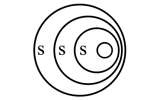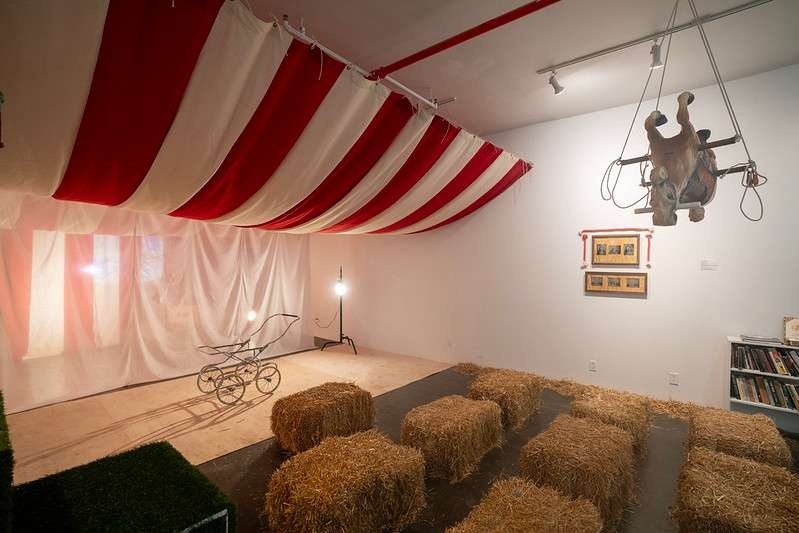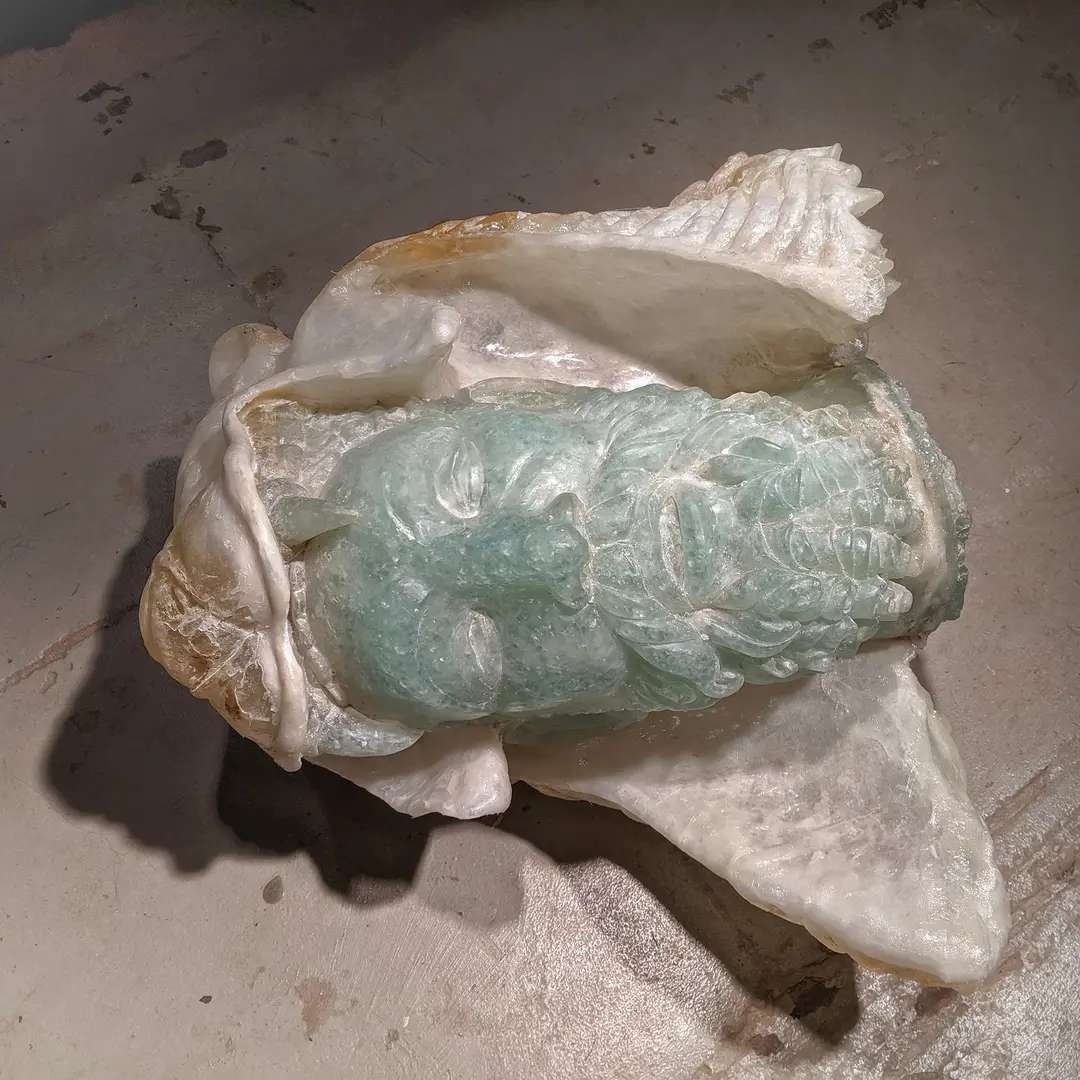Originally, music was produced by bodies: singing bodies, and bodies playing instruments. For much of history these bodies were devoted solely to reproducing what they had heard. Only in the last century have we discovered the owners of these bodies, and granted them the right to make music as they hear it, or before. But a reciprocal development has also occurred. For 500 years composers have slowly tightened the sieve of text, colonizing the nuances that had been the only domain of the performer’s agency. As total serialism and computer music completed this elision of the performer’s desire, John Cage went further by forfeiting his own choices as a writer.
What remains? For Cage’s colleague Alvin Lucier, the answer appears to be Nature. In a 2003 interview he says, “My own prose scores define specific tasks for the performer to reveal the acoustic phenomenon which is at the core of the piece. Personal choices, based on what a player feels to be musical, have no place in these works.” He says of these acoustic phenomena, which are essential for him, “natural sounds are unintentional, but nonetheless press out (express) from themselves messages with no meaning other than what they are or how they are produced.”
For Cage and Lucier, sound is no longer a signifying medium, with a meaning deriving from the obscure desire of a musician and the unresolved destiny of a discourse. It is the index of a world unadulterated by desire. A generation of sound artists has come to rest on this branch, quieting themselves so as to listen for something beyond what we can imagine, symbolize, or execute.
The results have been inspiring, but not because we’ve transcended anything. On the contrary, when we forfeit music’s imaginary answer to our desire, what emerges is no less than the structural support of this answer: the voice, the mark, and repetition. Our access to Nature remains unchanged.
Laura Vitale’s project, White Sands, provides concrete indications of this support. Anyone working in sound relies crucially on pockets of space: the hollow of a guitar, the bore of a saxophone, or the trachea of a singer, not to say the room that encloses them. In the pores of the plaster of White Sands, these pockets shrink almost to a point. The air bubbles they emit are singular marks that represent, better than any melody, which might imply contents for these containers, a minimum signification. Melody is reduced to distinction itself, the separation of an inside from an outside, a here from a there.
This distinction is then repeated. If we take it to indicate only difference as such, prescinding from the possible varieties of difference, how does this repetition function? We can examine it in terms of G. Spencer Brown’s calculus of distinctions, first introduced in his 1963 book “The Laws of Form”. There are only two places where the distinction can be repeated: outside the first distinction or inside it. In the first case, the two instances of distinction are effectively identical. Since we are dealing only with distinction as such, they both indicate the same thing. So we can make the following equation:

In the second case, each distinction can be uniquely identified because one of them has precedence over the other. The inner distinction indicates a difference from the first. What is distinct from distinction is the lack of distinction, hence:

Note however that the configuration is crucially determined by the position of the person observing it. Imagine that we are an inside one of the bubbles. In the first case, that bubble now separates us from the other, taking precedence. In the second case, that bubble no longer separates us from the inner bubble; so the two boundaries are equal in their relative proximity. In short, when the observer crosses a boundary, the configuration is effectively reversed. Consequently, distinctions can be understood as crossings: possible events that produce a pure oscillation between an unmarked state and a marked state.

One might object that the position of the observer doesn’t affect anything: since the pervasive space of the studio and the wider world grounds the appearance of the bubbles, we know perfectly well which bubble is on the outside and which is on the inside, regardless of where we happen to be. But, notice that in invoking this pervading space as the guarantor of what it contains, we tacitly position ourselves at its periphery. This periphery is the distinction of the pervading space, which would itself require an observer to guarantee it, and so forth.




To look for an anchor point around the distinction is to enter into the flight described by the Danish novelist Poul Martin Møller in 1891:
I start to think of my own thoughts of the situation in which I find myself. I even think that I think of it, and divide myself into an infinite retrogressive sequence of “I’s” who consider each other. I do not know at which “I” to stop at as the actual, and in the moment I stop at one, there is indeed again an “I” who stops at it. I become confused and feel a dizziness as if I were looking down into a bottomless abyss.
We can say that the subject produces a distinction that contains itself, as expressed in the equation:

The question then emerges: does S( ) denote the marked state or the unmarked state? The answer is isomorphic to the Epimenides paradox (“This statement is false”). In the calculus of distinctions, it appears as a vibration: an infinite series of marked states propagating from an indeterminate center that is neither marked nor unmarked. Spencer Brown refers to this third value as “imaginary”. It is the root value of the musical signifier, which one can see come into being as the tiny pops of the air extruded by plaster blur together into a nascent tone, acquiring a consistency capable of supporting an imaginary answer to our desire.
This is the structure of the voice, which is implied as soon as sound becomes significant. We are born into a world of sound, and our imagination of it soon mingles with our most private thoughts. This mingling occurs so much that it seems to anchor the anchorless “I” described by Møller. For instance, to become a musician is typically to become the agent of a genre. But these borrowed sounds immediately become the basis for a profound identification on the part of the musician, henceforth mediating his relationship to enjoyment. Music is a proprietary enjoyment, in which distinctions become pockets for the imagination to keep something—for instance, the hook of a pop tune.
But whether it seems to well up internally or pervade us, the voice itself is unlocatable. It haunts sound with meaning, and subjects us to it, to the extent that we’re not truly able to decide what to say—only whether or not to say it. It is that which already escapes Cage and Lucier’s bogeyman, intention. It is the fugitive object from which musical discourse issues, and which lends melody its inscrutable coherence.
The voice is the other of intention. But it also implies the possibility of a response from an other who could respond in kind. Like Achilles chasing the Tortoise, the musician forever reaches out to this silent partner beyond sound by means of sound. But he never reaches it. He forever substitutes sounds for other sounds, and for himself, orbiting their cause, the voice, which has already receded. Meanwhile, the partner sits unrealized at the infinite limit of the recursion of signification.
Cage’s birds have in fact hit upon two genuine alternatives to music.
The first alternative is to assume the place of the silent partner. This position recognizes that no sound exists that answers to our desire. It recognizes at the outset the fatal partiality of the captivating chain of sounds. What emerges in the space left behind is not a sound—it is what is happening for the first time.
The second alternative is to assume the place of the voice. This position recognizes that it isn’t the case that there is no sound that answers our desire. It is important to note that this does not contradict the first position—if the domain under consideration (the domain of sound) is infinite. It isn’t the case that nothing exists to satisfy our desire, but any such existence is indeterminate. It can manifest only by accident, or not at all. The voice provides the field in which the instance might take place, and creates the conditions of its desirability.
By way of contrast, music is the purported access to the sound that must be enunciated, by means of the sound that can be enunciated. Music says that the sound that haunts us in our imagination is necessarily all we have to answer to our desire. In the twentieth century, the practice of soloing has allowed musicians to discover the singularity of their mode of signifying discourse, also known as their sound. Reciprocally, we have also discovered that not all listeners need to enjoy through the mediation of sounds. Why? Only because the universe of sound is infinite.
About the artist
Jackson Moore
Jackson Moore is a composer, sound artist, and multi-instrumentalist. In the nineties his work examined the semiotic systems that musicians use to communicate with one another. Moore moved to New York in 1999, and has since undertaken numerous projects. From 2003 to 2007 he wrote and recorded a book of radically antisymmetrical song forms for jazz musicians. In 2005 he founded New Languages, now a 501(c)(3) non-profit dedicated to improvised music, and has gone on to organize numerous festivals and special events. Recently he has been documenting Moss, a functional musical pidgin language, and developing a body of formalized music based on natural language syntax. Since 2010 he has worked at Eyebeam Art+Technology Center, where he is researching auditory architecture using sound localization techniques. Moore has also taught in many different settings and is currently developing experimental approaches to collaborative education with The Public School New York.
Projects
Explore/Archive
See allOctober 2025
streamlined reflections, courtesy of noise canceling headphones
Gabrielle Rucker
Gabrielle Rucker reflects on the radical intimacy and auditory life at the heart of Deli Radio
July 2025
Tell My Jockey: CUNTRY’s Discourse From the Horse’s Mouth
Ericka Pérez
Assembly fellow Ericka Pérez reflects on clowning, resistance, and CUNTRY’s radical refusal to perform.
April 2025
The Second Head of Hercules: Art and Resistance Through Four Years of Upheaval
Shakeem Floyd
written in conjunction with artist Onyedike Chuke's Session x Assembly project, The Forever Museum Archive: Circa 2020_An Object





